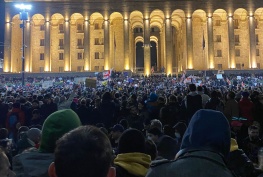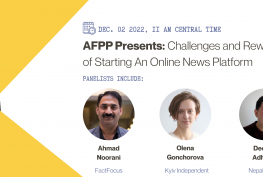By Daniel Pearl Fellow Sherif Tarek
Many people seem to naturally presume that conflicts are always between good and bad. In many cases it’s more likely between bad and worse.
When a conflict is aggravated, people often take sides depending on their affiliations and/or beliefs. The side they endorse represents the good to them. All evil is at the other end. Of course it is vice-versa for those adopting opposing views.
As they grow fanatic, many people create their own parallel worlds in their heads. They see from reality only what would help sustain their respective world and just ignore the rest.
On social media, they only share news and videos that support their cause, and turn a blind eye to anything that would mess up their world. Conflicts are black and white to many people. Usually there is a huge grey area between the two extremes.
Polarized media can widen the gap between both camps and further isolate them.
Muhammad Saeed al-Sahhaf, an Iraqi Information Minister under executed Iraqi president Saddam Hussein, is one example. He embarked on a TV propaganda campaign based on sheer and utter nonsense, mainly about the invincibility of the Iraqi army and the inevitable longevity of Saddam’s rule.
The most prejudiced media appears during a time of war and drawn-out conflicts. These are stern tests for journalists’ ability to remain impartial.
Most, if not all international news agencies and papers stress that reporting only one side of the story/truth doesn’t present the whole truth. This rule was made because journalists cannot afford to be biased like normal people while reporting. Another guideline for good journalism is to ‘show, not tell’ – present the facts and don’t editorialize.
Informative unbiased reporting helps readers render good fair judgments, and thus reduce tensions and intolerance amid conflict. Prejudiced journalism and mouthpieces have the opposite effect. They help create parallel worlds.




